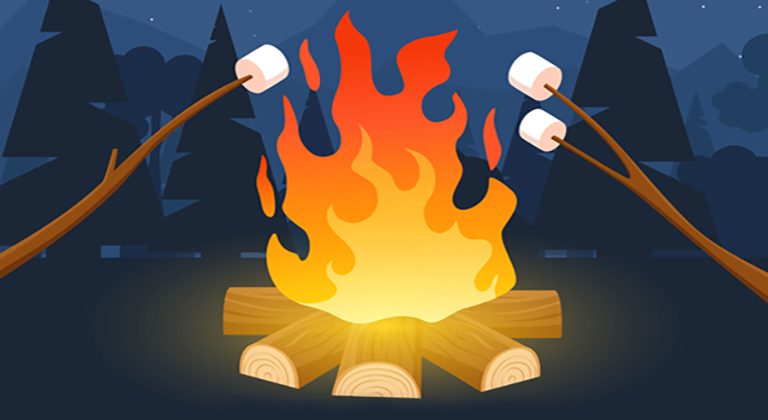For many years Israeli human rights activists in the occupied Palestinian territories have been saying, as vociferously as we could, that the intricately intermeshed system of the occupation—settlers, soldiers, police, military courts, the media, and, behind it all, the government—has been committed to a single overriding goal: ruthless ethnic cleansing in all of Area C (the 60 percent of the West Bank under Israeli control) and, more recently, in parts of Area B (the 22 percent under joint Israeli-Palestinian control) as well. Stealing vast tracts of Palestinian land has been the primary mechanism. The courts, including the Supreme Court, have usually gone along with it. Brutal settler violence against Palestinian villagers has become routine, as I have documented frequently in these pages.
We have done whatever we could to halt this remorseless machine. Over the years we have had many relatively minor victories that were nonetheless crucial for the survival of entire clans and families; after long years of tedious struggle in the field and in the courts, many acres of Palestinian land were restored to their rightful owners. But what we have been seeing in the last few weeks, following upon continuous violence against Palestinian communities from the start of the Gaza war, is the denouement of the tragedy. Palestinian farmers and shepherds in the West Bank are cut off from water, attacked by settler thugs, and repeatedly threatened with death; their herds are stolen in huge numbers by the settlers, with the active support of police and soldiers; the minimal infrastructure in the villages—electricity, sanitation, housing, food reserves—is being savaged. Some sixty villages have been destroyed and their people violently expelled. In short, life for Palestinians in Area C has become a living hell.
Let there be no mistake. This is the second Nakba, by now in full gear. We are seeing war crimes and crimes against humanity on a large scale. I want to describe what happened in the once lovely village of Magha’ir a-Dir in the central West Bank, not far from Ramallah.
On May 18, Israeli settlers arrived in the village and began constructing the rudiments of an outpost only a few meters from the Palestinian sheepfolds and houses. For the last two years settler harassment there has been a quotidian reality. We used to protect the villagers every morning at dawn when they drew water from a pipe near the main north–south road. They paid for the water, but the settlers repeatedly tried to prevent them from filling up their tankers. Sometimes the settlers shot at them. Now they were installing themselves inside the village in order to pursue their goal of expelling its people once and for all. And the Palestinians knew what was in store if they tried to stay in their homes. Within a week they had fled—I don’t know where.
Even as the villagers were taking apart their homes and fences, trying to salvage some remnant of their former lives, on May 24 the settlers attacked, shooting, throwing rocks, and beating them viciously with clubs. At least eight Palestinians were wounded, along with two Israeli activists who were trying to protect them; one of the latter, Avishay Mohar, was hospitalized with serious injuries. It wasn’t enough for the settlers that they had destroyed the village; they couldn’t resist the impulse to inflict more pain. They are motivated by intense hatred of all Arab people and by a depraved messianic ideology—a travesty of the Jewish tradition. As one of them said when the outpost was set up in Magha’ir a-Dir, “This is what redemption looks like.”
The settlers are now trying the same tactic in two villages I know well in the southern Jordan Valley: Mu‘arrajat and Ras al-‘Ain. We are doing what we can to stop them, but the future looks bleak. In early March a group of fifty or more armed settlers invaded Ras al-‘Ain, with soldiers and police leading them in, and stole between 1,000 and 1,500 sheep. The Bedouin shepherds live off their sheep. The financial loss to the families is over a million Israeli shekels (around $300,000), possibly more than twice that sum. These are people eking out a bare existence in conditions of extreme hardship with the settlers always at their throats. The beginnings of a new settler outpost have now been built deep inside Ras al-‘Ain, thus making the threat of expulsion immediate. The settlers have already plowed a field—always a claim to ownership.
Who are these violent settlers? Many of them are disturbed adolescents who have found refuge, and some meaning to their lives, in the cancerous outposts spread throughout Area C. They have been brainwashed and trained to hate and kill. Often when I meet them in the field, they seem to me to be confused, halting in their speech and thoughts, out of place, but dripping with enmity. Recently one of them said to me, “Don’t you know that all Arabs want only one thing, that is, to kill Jews? You can’t find a single Arab who doesn’t long to do that.” It’s more or less impossible to break through the barriers that have been erected in their minds. They are also fanatically religious, if one can even use that word for the nefarious vision they have nurtured.
But among them there are also older men (hardly any women), some of them second- or third-generation residents of the Israeli settlements in Palestine. They are the ones who indoctrinate and who give the orders. You wouldn’t want to meet them in a dark alley, let alone on the rocky hills of South Hebron or the Jordan Valley. They have been armed with guns by Itamar Ben-Gvir, the convicted criminal who is Benjamin Netanyahu’s minister of national security.
One can see evidence of a powerful sadistic strand in their behavior. For example, one early evening in May a band of six or seven settlers broke into a family’s house in the village of Mu‘arrajat and attacked everyone—children, women, men—with pepper spray. From experience I can tell you that it’s a torture. You think you’ve gone blind, and the fiery pain lasts sometimes for hours. I don’t have words to describe what it takes to do that to a child.
Or consider the always critical issue of water. Daytime temperatures in the Jordan Valley, now and throughout the summer, are over 105 degrees Fahrenheit. You can’t survive there for more than a few hours without water. So imagine the settler, masked, on horseback, who entered Mu‘arrajat and opened the faucet on the water tanker that had been filled that morning. The water spurted out and soaked the rocky soil. He was filmed by one of the villagers. Denial of water has also become a constant reality in Ras al-‘Ain and all other Bedouin villages in the valley. Nearby Israeli settlements have running water and swimming pools.
As everyone knows, in Gaza, or what’s left of it, the scale of casualties is immense. Tens of thousands of children, women, the aged, and other innocents have been killed by Israeli bombings. Ninety percent of the homes and 60 to 70 percent of the buildings have been destroyed. The entire population, some 2.1 million people, is being herded into a crowded area near Rafah—perhaps a fourth the size of the entire Gaza Strip—possibly in preparation for Netanyahu’s plan for “willing transfer” to some other land. Libya, a failed state, keeps coming up as a possible destination. It is surreal even to imagine such a prospect, let alone to carry it out, but Netanyahu talks about it as an achievable goal. Forget the word “willing”: this would be a Nakba that would dwarf by far the first one of 1948. A poll published in Haaretz in late May showed that 82 percent of the Israeli population supports this inhuman scheme. A more professional poll conducted around the same time by three Tel Aviv University political scientists put support for transfer at 53 percent of the Jewish population of Israel, which offers some slight relief.* That means, however, that substantial segments even of the Israeli center-left, that part of the electorate that is still committed to democracy, have no problem with ethnic cleansing, at least in Gaza.
The trauma of October 7 and the Hamas atrocities have turned huge numbers of Israelis toward revenge. Netanyahu explained to his coalition partners and to the public at large that Israel’s friends abroad wouldn’t like to see mass starvation in Gaza; it apparently never occurred to him that it was a moral catastrophe. The Palestinian population in Area C on the West Bank numbers roughly 400,000, according to Shaul Arieli, the best-informed authority. The Israeli right wing wants to expel them. This is the abhorrent reality we are facing.
The government has now approved the establishment and legalization of twenty-two more Jewish settlements scattered throughout the West Bank. Government investment in infrastructure for Israeli settlements and outposts in Areas C and B—roads, electricity, water, subsidized housing, military protection—siphons off billions of Israeli shekels each year. Palestinian land reserves throughout Areas C and B have been successfully targeted by the illegal settler outposts established for this express purpose, not counting the lands that have been stolen by the older settlements that are legal under Israeli law. Recently Israel has also begun erecting government-sanctioned settlements in Area B, supposedly under Palestinian administrative control, in direct contravention of the Oslo Accords and, needless to say, of international law.
The critical point to keep in mind is that engineering the second Nakba and annexing the occupied territories are integral parts of Netanyahu’s war against the State of Israel’s democratic institutions, its social solidarity, and above all the rule of law. He continues to defy the Supreme Court and its rulings. He is a weak man without any trace of moral fiber but with an incomparable talent for destruction. The state he in theory governs is coming apart at the seams. In practice, what is left of it is now in the hands of the two linchpins of the Likud-based coalition: Ben-Gvir and Bezalel Smotrich, the messianic ideologue of Jewish supremacy who is minister of finance.
A prevalent misconception defines Netanyahu as a cynical opportunist, when in fact he is a hardcore ideological extremist like his late father, Ben-Gvir, and Smotrich. His entire life has been committed to the idea that it is possible to annihilate the Palestinian national movement forever. These days he speaks in public of an alternative to the “Oslo narrative,” which was based on mutuality between the two peoples in Israel/Palestine. You can guess what that alternative will look like.
Still, there is robust protest and resistance in some parts of Israel, though not in the Knesset, where the so-called opposition parties are completely impotent. (Naama Lazimi and Gilad Kariv of the Democrats are striking exceptions.) Real resistance happens in the streets and in civil society. Tens of thousands of ordinary Israelis demonstrate every week against the government, against the Gaza war, and for the urgent return of the hostages still held by Hamas. Much smaller in number, but at times with a disproportionate impact, are the activists in the many volunteer organizations at work in the Palestinian territories. Many of them are young people who are committed to the classical liberal democratic values—equality, kindness, tolerance, and the rule of law—and who are prepared to take the risks involved in confronting the settlers and the apocalyptic nationalists. Others, such as the remarkable group Children of Abraham, take their inspiration from humane, historically moderate Jewish sources; they are more likely to quote Maimonides than Hannah Arendt. They spend Shabbat weekends on guard in villages such as Ras al-‘Ain, and they have the stamina and courage that one needs there.
It is a privilege to work among these activists, who think that what they are doing is nothing special, only the natural response of any normal person in times of severe crisis and oppression. Empathy, the polar opposite of hatred, is the inner force that guides them. Sometimes I think there is a special beauty in fighting for noble lost causes.
We’ve now had a twelve-day war with Iran and spent many hours in the bomb shelters. A fragile cease-fire is in place. There is relief in that, but I don’t share the euphoria that is flooding the Israeli mainstream. If we are lucky, the Gaza war will now end at last, and the surviving hostages will come home. Netanyahu will be free to concentrate on the Nakba project and on fomenting more hate. Our Palestinian friends on the West Bank sometimes say, correctly, “War or no war, it hardly matters—we are living on the edge of an abyss.” Settler attacks on their villages intensified, as expected, during the fighting. And if Israel’s external enemies have been temporarily defeated, the rampant internal illness of this country remains to be healed.
—June 25, 2025



















 English (US) ·
English (US) ·